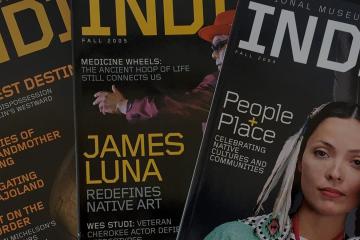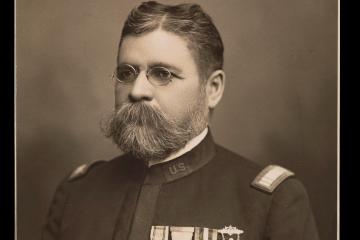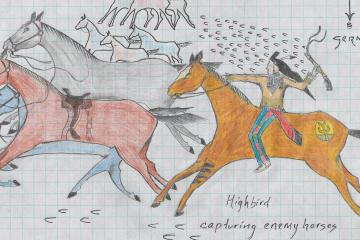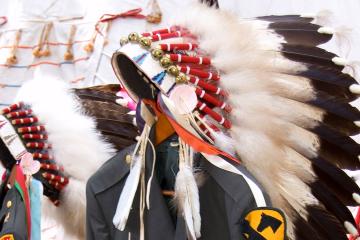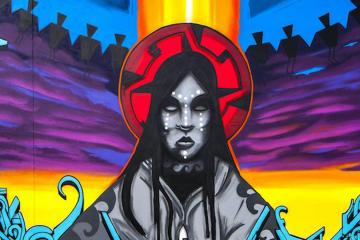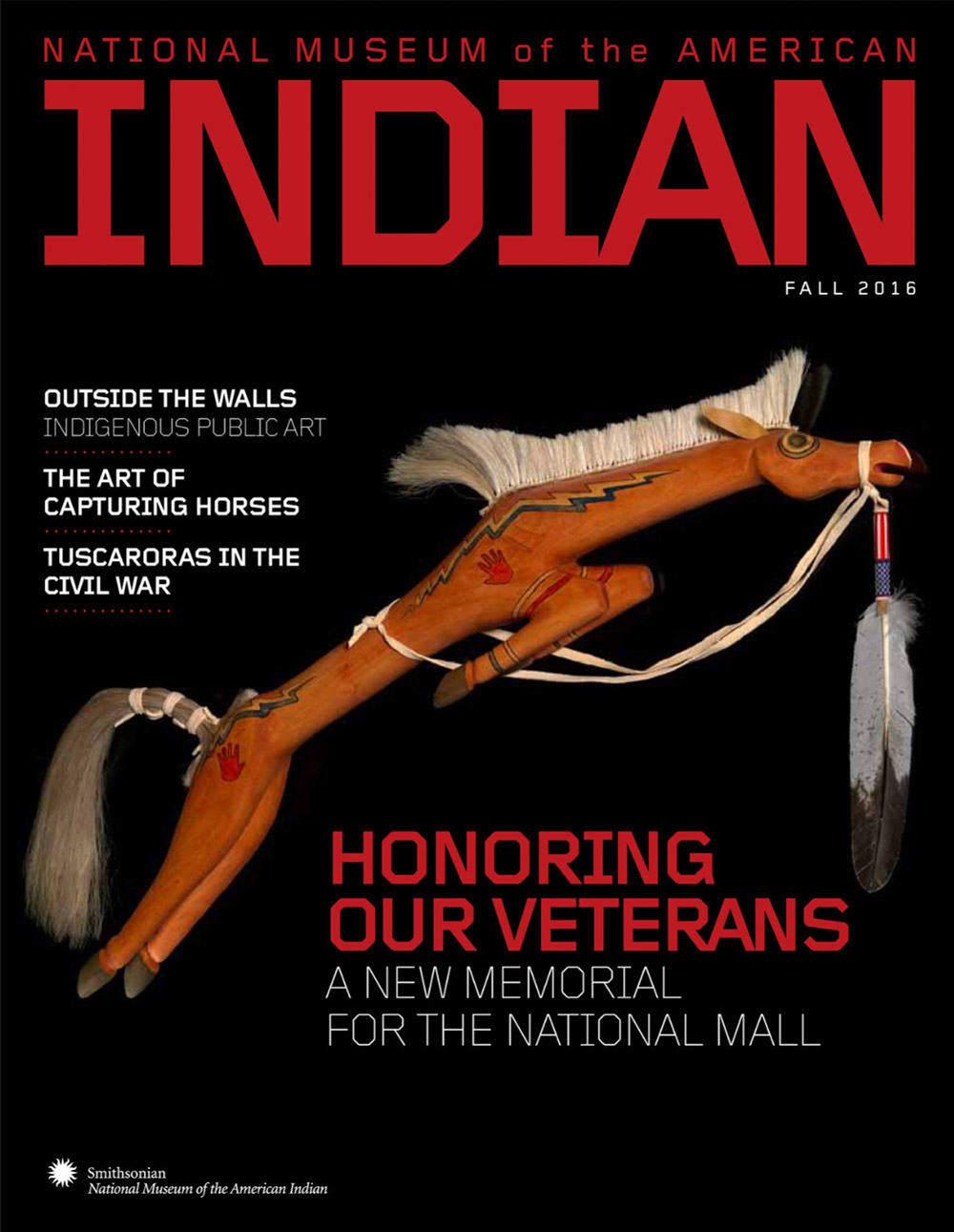
On the Cover
The horse stick is a prominent feature of ceremonial dances, often celebrating the bearer’s feats of military valor. This tradition is alive today, both in the artistry of this modern version by Bryan Akipa (Sisitonwan Dakota) and in the wartime heroism of American Indian veterans, such as the famous World War II horse raid of Joseph Medicine Crow (Apsaalooke [Crow]). This object is a fitting emblem for an issue devoted to our Museum’s new Congressional mandate of establishing a National Native American Veterans Memorial, to be dedicated on our grounds on Veteran’s Day 2020.
Dance Staff, 2008. Artist: Bryan Akipa, Sisitonwan Dakota [Sisseton-Wahpeton Sioux Tribe] Sisseton, Lake Traverse Reservation; Roberts County; South Dakota. Materials: Wood, horsehair, hide, rawhide, turkey feather/feathers, commercially produced fabric patches/insignia, cotton twine/string, iron nails, glue, wood stain, paint.
Techniques: Carved, stained, painted, pyroengraved, wrapped, tied, glued.
Purchase from the artist, 2008. 37" x 2.9" x 11.8". (26/7158)

